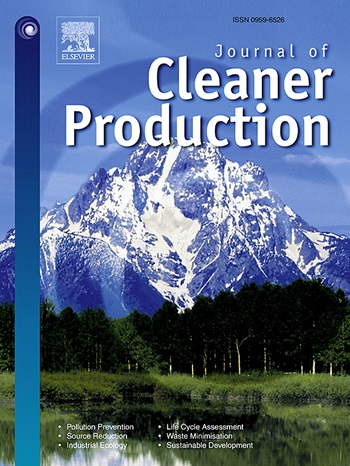A 1O2-dominated metal-free electro-Fenton floating system for water decontamination
IF 9.7
1区 环境科学与生态学
Q1 ENGINEERING, ENVIRONMENTAL
引用次数: 0
Abstract
The heterogeneous electro-Fenton (EF) process encounters major obstacles, such as high costs and the risk of secondary pollution. Herein, we proposed a metal-free EF system utilizing a cost-efficient floating electrode composed of boron-modified acetylene black (BAB). The system enhanced H2O2 production and promoted the generation of reactive oxygen species (ROS), effectively degrading bisphenol A (BPA). The floating cathode promoted the natural oxygen diffusion to the reaction interface, removing the requirement for pumping oxygen or air. Moreover, this system enhanced H2O2 production 8-fold (451.25 mg/L) compared to conventional vertical mode. Singlet oxygen (1O2) was found to be the key ROS during BPA degradation, contributing 50.82%, while hydroxyl radicals (•OH) and superoxide radicals () contributed 28.62% and 20.55%, respectively. The long lifetime and environmental interference resistance of 1O2 were effectively utilized. Theoretical models and experiments indicated that the -BC2O group promoted H2O2 generation, while the -BC3 group facilitated the production of •OH and the interconversion between •OH, , and 1O2. Additionally, the system maintained stable catalytic efficiency over an extensive pH range (3-11). Furthermore, the BAB-70 electrode required a cost of approximately $9.2×10-5 for H2O2 production at a rate of 1 mg/L, representing a reduction of 11-fold to 4865-fold compared to the electrodes reported in previous studies. The study demonstrates an innovative strategy for advancing electrochemical water treatment by rationally combining ROS modulation with reactor configuration optimization, enabled by cost-effective electrode fabrication.

一种以二氧化氧为主的无金属电fenton漂浮系统,用于水净化
非均相电fenton (EF)工艺面临成本高和二次污染风险等主要障碍。在此,我们提出了一种无金属的EF系统,利用一种经济高效的由硼修饰乙炔黑(BAB)组成的浮动电极。该系统提高了H2O2的生成,促进了活性氧(ROS)的产生,有效地降解了双酚A (BPA)。浮阴极促进了天然氧向反应界面的扩散,消除了抽氧或抽空气的需要。此外,与传统垂直模式相比,该系统将H2O2产量提高了8倍(451.25 mg/L)。单重态氧(1O2)是BPA降解过程中的关键活性氧,贡献了50.82%,羟基自由基(•OH)和超氧自由基()分别贡献了28.62%和20.55%。有效地利用了氧的长寿命和抗环境干扰性能。理论模型和实验表明,-BC2O基团促进H2O2的生成,而-BC3基团促进•OH的生成以及•OH、、与1O2之间的相互转化。此外,该系统在广泛的pH范围内(3-11)保持稳定的催化效率。此外,以1 mg/L的速率生产H2O2, BAB-70电极的成本约为9.2×10-5美元,与之前研究中报道的电极相比,降低了11倍至4865倍。该研究展示了一种创新的策略,通过合理地将ROS调制与反应器配置优化相结合,通过经济高效的电极制造实现了电化学水处理的发展。
本文章由计算机程序翻译,如有差异,请以英文原文为准。
求助全文
约1分钟内获得全文
求助全文
来源期刊

Journal of Cleaner Production
环境科学-工程:环境
CiteScore
20.40
自引率
9.00%
发文量
4720
审稿时长
111 days
期刊介绍:
The Journal of Cleaner Production is an international, transdisciplinary journal that addresses and discusses theoretical and practical Cleaner Production, Environmental, and Sustainability issues. It aims to help societies become more sustainable by focusing on the concept of 'Cleaner Production', which aims at preventing waste production and increasing efficiencies in energy, water, resources, and human capital use. The journal serves as a platform for corporations, governments, education institutions, regions, and societies to engage in discussions and research related to Cleaner Production, environmental, and sustainability practices.
 求助内容:
求助内容: 应助结果提醒方式:
应助结果提醒方式:


